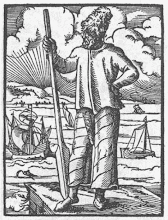with notes on a Roman Holiday.
Be informed: this blog is not defunct. It's just that I'm at practice all the time and have little opportunity to write or to do things worth writing on.
-------------------------------------------------------------------

But on a rowing-related note, today marks the 437th anniversary of the Battle of Lepanto, the last major naval battle fought between fleets of rowed galleys. This battle, a victory for an (almost) united Europe over the Turks, is not as famous as it ought to be——I don't remember any of my history classes putting much emphasis on it. Of course I may just have been dozing off in class.
I began to take an interest in this bit of history when I was in Rome with my father. We had gone to get tickets to see the pope, and while we were waiting on line in the courtyard outside the office of the relevant ecclesiastial body, we were approached by an old American priest, who asked us if we would like a tour of the place. As we found out, the office had formerly been a seminary, and the seminary had formerly been a convent. (The place, by the way, was a block from the Pantheon; who knows what it was at first?)
With a few other tourists tired of waiting in line, we were led through a small side door into one of those exuberantly Baroque chapels that are too common in Rome to arouse much interest. With the glazed eyes of overwhelmed tourists we followed the priest's finger from one work of art to the next. It seemed he had half-a-dozen anecdotes about each statue; but after only a few days in Rome, I had got used to this kind of routine, and the words flowed by me like a sort of soundtrack as I gazed around the room.
But when the priest turned to a side altar near the back of the chapel, his demeanor changed. Over the altar was an unassuming and rather crude image of the Virgin of Guadalupe, which I recognized from my grandmother's prayer cards and from Mexican T-shirts. "This," explained the priest, thrilling to his own words, "is the icon of the Virgin that was carried on the papal flagship at Lepanto. Now how many of you know what Lepanto was?" None of our group knew (though I think he would have explained either way), so we were treated to a delightfully jingoistic account of Christianity triumphing over the Turk. He was a priest, after all.
Cervantes fought at Lepanto, and in Chesterton's poem he dreams up the Knight of the Sorrowful Countenance as he sheathes his sword at the battle's end. The poetic license of this scene aside (Cervantes was probably more concerned with his maimed hand), I don't think it's necessarily a coincidence that so much artistic achievement, and not just in literature, seems to follow on Lepanto. There's nothing like a victory to remind people that they can do great things.


2 comments:
good job.
Thanks, Simone.
Post a Comment